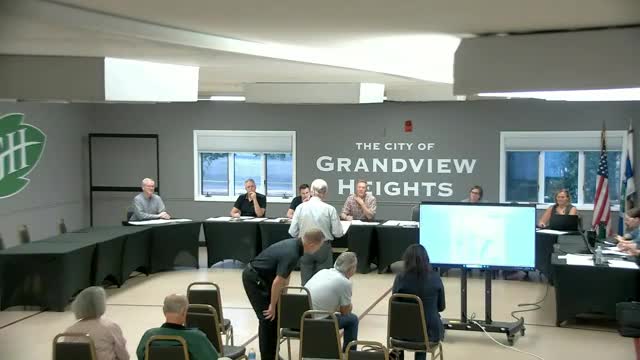Homeowner battles zoning restrictions after 25 years
September 20, 2024 | Grandview Heights, Franklin County, Ohio
This article was created by AI summarizing key points discussed. AI makes mistakes, so for full details and context, please refer to the video of the full meeting. Please report any errors so we can fix them. Report an error »

In a recent government meeting, a homeowner presented a case for the removal of longstanding restrictions on their property, which they argue have become an encumbrance on its value. The homeowner, who has extensive experience in the design and build industry, recounted the history of their property purchase in 1998, highlighting that the lot had been split from a larger parcel and was initially advertised with misleading information regarding its size.
The homeowner explained that the restrictions were originally put in place at the request of a neighbor, who was concerned about potential developments on the lot. These restrictions limited the lot coverage to 20% and imposed specific setback requirements. However, the homeowner contended that the current zoning code would allow for a more substantial development without these limitations, suggesting that the restrictions are outdated and no longer relevant.
During the discussion, it was noted that the property is significantly larger than the minimum required for its zoning classification, and the homeowner argued that the restrictions hinder their ability to utilize the land effectively. They emphasized that they have been paying full taxes on the property despite these limitations and expressed a desire for the restrictions to be vacated to align with current zoning standards.
The meeting also included input from staff members who provided context on the zoning code and the historical reasons for the restrictions. They acknowledged that the concerns raised by the original neighbor may not reflect the current dynamics of the neighborhood, as ownership and development patterns have changed over the past 25 years.
As the discussion progressed, it became clear that the homeowner's request for a review of the restrictions would require careful consideration of both the historical context and the current zoning regulations. The outcome of this meeting could set a precedent for similar cases in the area, as property owners seek to navigate the complexities of zoning laws and neighborhood agreements.
The homeowner explained that the restrictions were originally put in place at the request of a neighbor, who was concerned about potential developments on the lot. These restrictions limited the lot coverage to 20% and imposed specific setback requirements. However, the homeowner contended that the current zoning code would allow for a more substantial development without these limitations, suggesting that the restrictions are outdated and no longer relevant.
During the discussion, it was noted that the property is significantly larger than the minimum required for its zoning classification, and the homeowner argued that the restrictions hinder their ability to utilize the land effectively. They emphasized that they have been paying full taxes on the property despite these limitations and expressed a desire for the restrictions to be vacated to align with current zoning standards.
The meeting also included input from staff members who provided context on the zoning code and the historical reasons for the restrictions. They acknowledged that the concerns raised by the original neighbor may not reflect the current dynamics of the neighborhood, as ownership and development patterns have changed over the past 25 years.
As the discussion progressed, it became clear that the homeowner's request for a review of the restrictions would require careful consideration of both the historical context and the current zoning regulations. The outcome of this meeting could set a precedent for similar cases in the area, as property owners seek to navigate the complexities of zoning laws and neighborhood agreements.
View full meeting
This article is based on a recent meeting—watch the full video and explore the complete transcript for deeper insights into the discussion.
View full meeting
